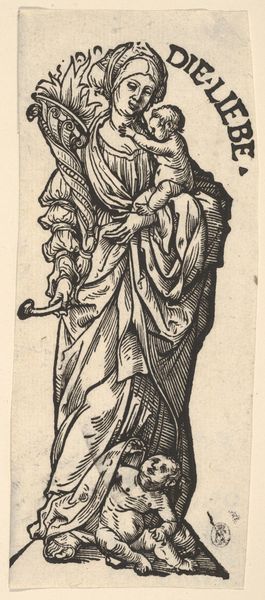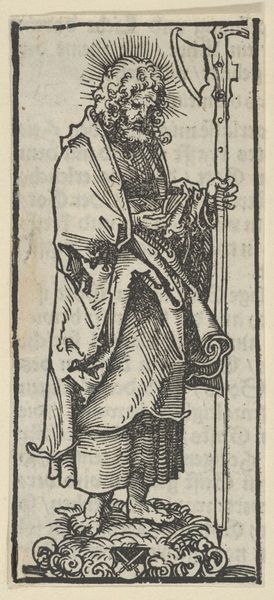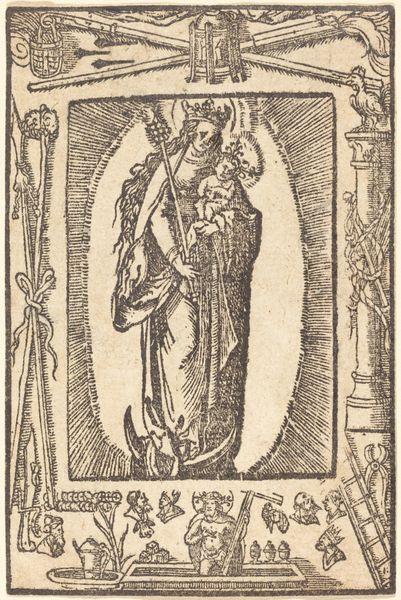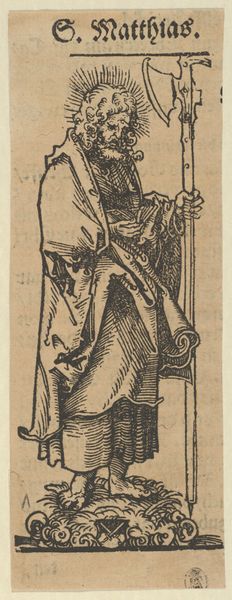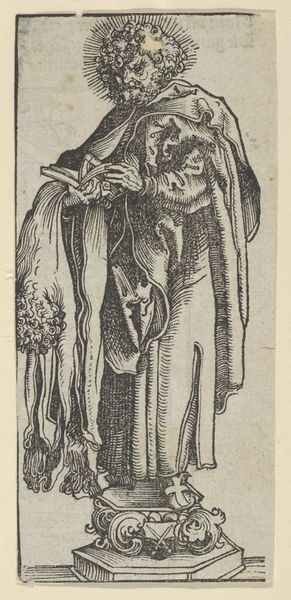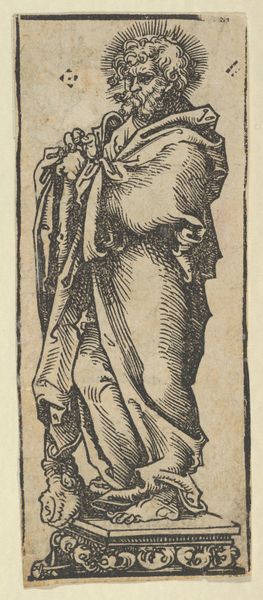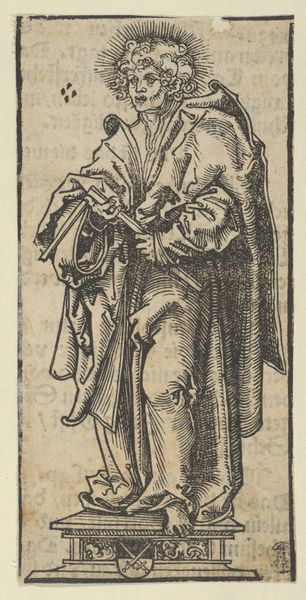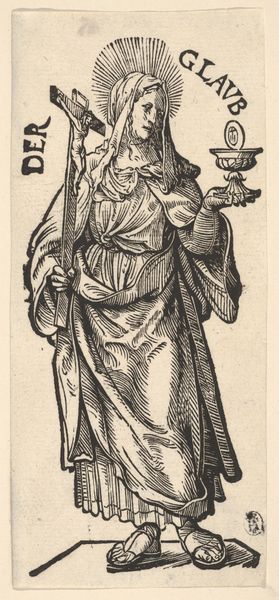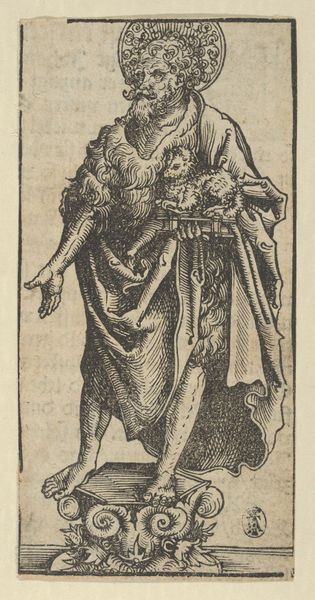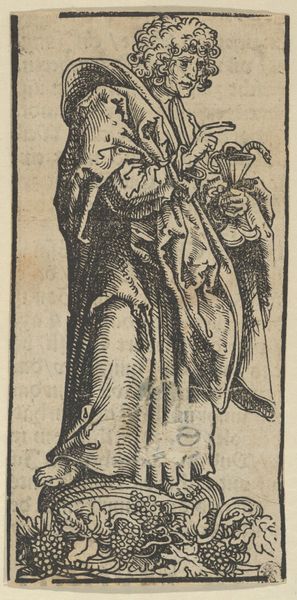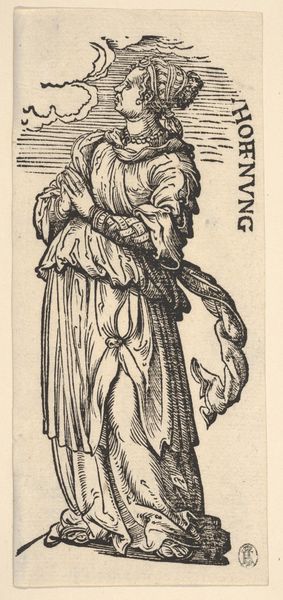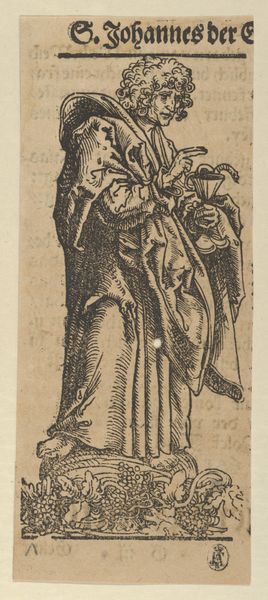
Prudence (Die Firsichtikait), from The Seven Virtues 1498 - 1531
0:00
0:00
Dimensions: Sheet: 6 5/8 × 2 15/16 in. (16.9 × 7.5 cm)
Copyright: Public Domain
This woodcut of ‘Prudence’ was produced by Hans Burgkmair in Augsburg, Germany, during the early 16th century. The image forms part of a series illustrating the seven virtues. But what does this image tell us about the social and cultural context in which it was made? Prudence, as depicted here, embodies a complex set of ideas. She is adorned with a snake, symbolising wisdom, and holds a mirror reflecting a Cupid-like figure, representing self-knowledge. These visual cues align with the prevailing Renaissance humanist philosophy, which sought to reconcile classical wisdom with Christian ethics. The fashion of her dress also alludes to the wealth of the merchant classes in Augsburg, one of the wealthiest European cities of the time, and her elevated status. But, to fully understand this print, we might delve deeper into archival sources, exploring the theological debates of the period and the social role of women in Augsburg society. With this type of research, the meaning of art becomes contingent on its historical moment.
Comments
No comments
Be the first to comment and join the conversation on the ultimate creative platform.
